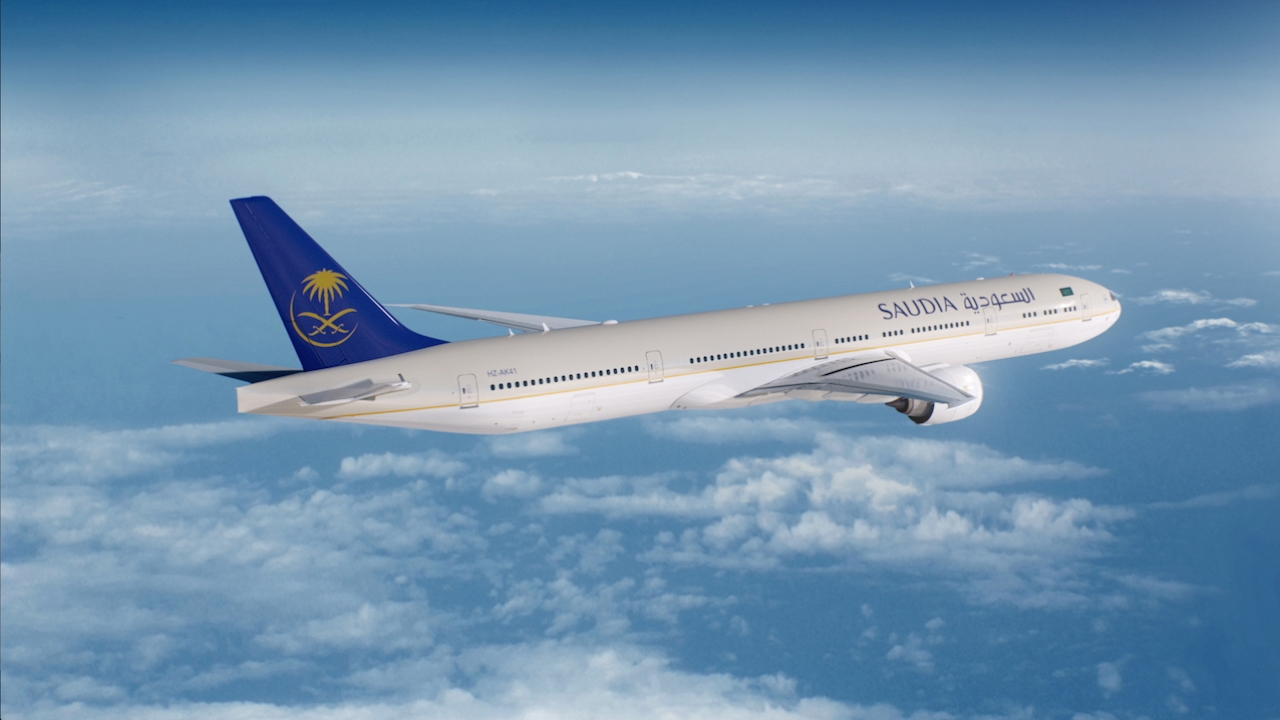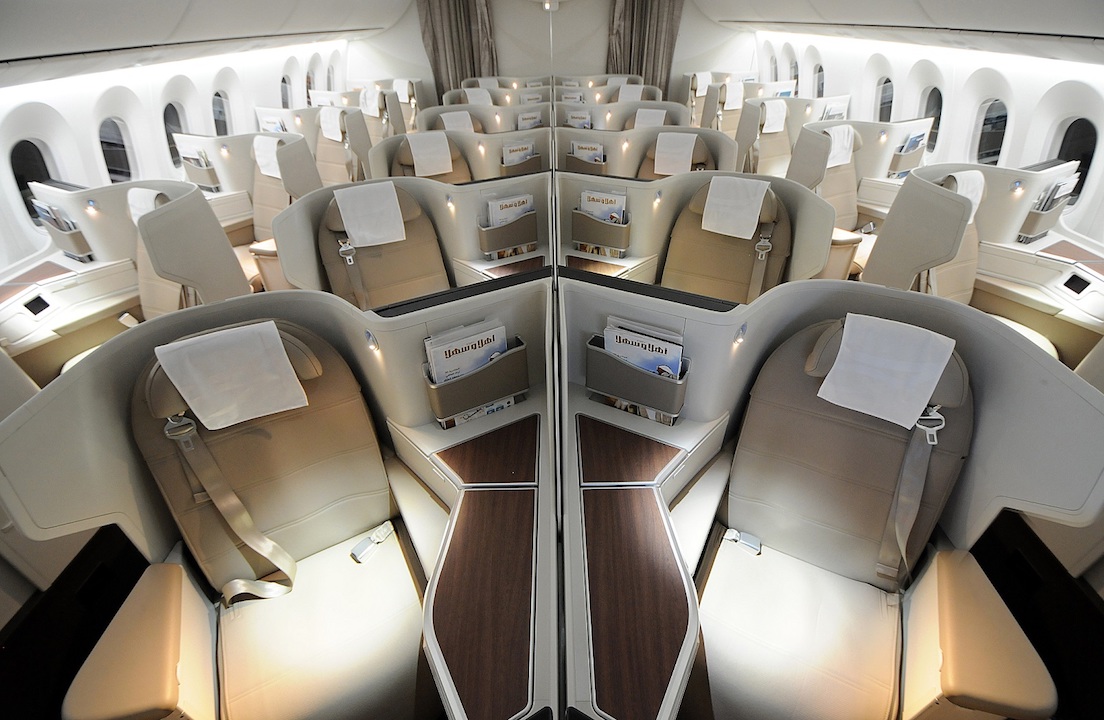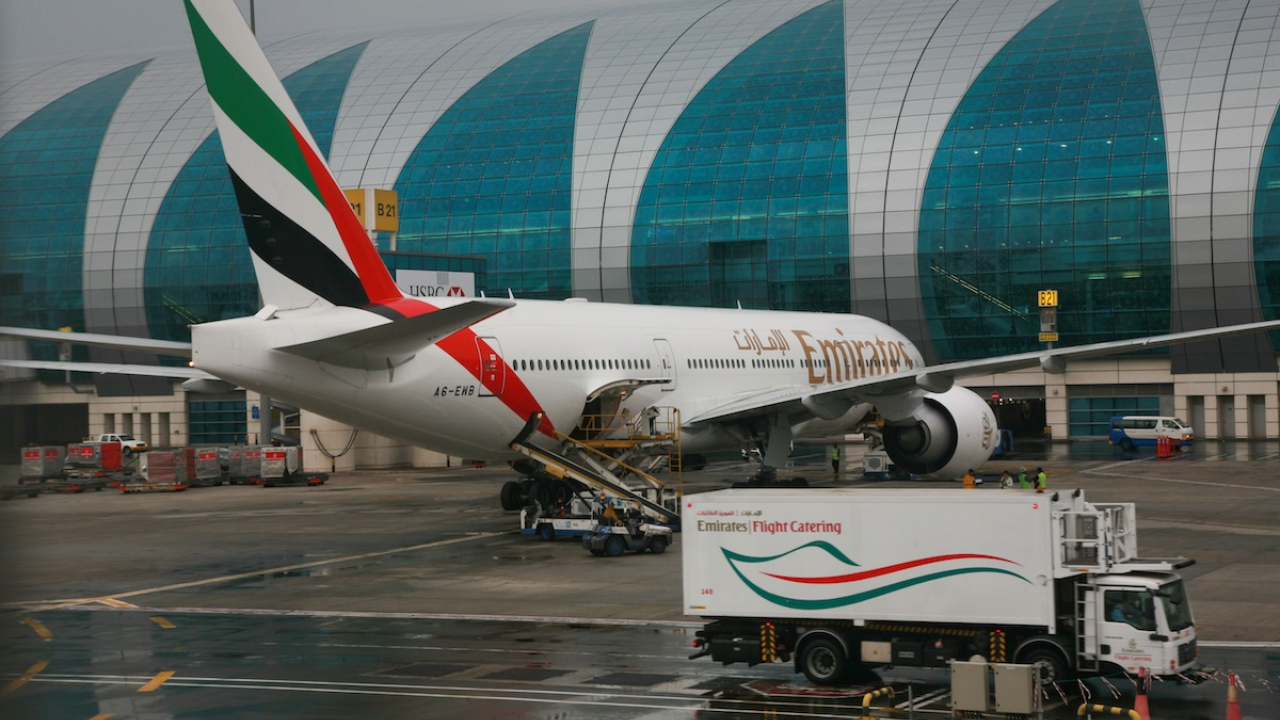Tail of the unexpected
A question-mark hangs over the future of Saudia after Saudi Arabia’s crown prince announced that the country plans to establish a new flag-carrier.

Up in the air: The future for Saudia is uncertain after the country’s crown prince announced plans for a new flag-carrier. Picture: Saudia.
Two years ago, at the first Saudi Airshow held at Thumamah airfield outside Riyadh, I was quietly buttonholed by a senior executive from the country’s national airline, Saudia.
Traditionally, Saudia had enjoyed an extremely low profile outside the Middle East. That meant it was not normally considered by westerners travelling to the Middle East unless their destination was Saudi Arabia itself.
That low profile was about to change, the executive said. It was going to be a case of ‘No more Mr Quiet Guy’. The airline was coming out of its shell and was preparing to talk about its virtues much more loudly than in the past.
A few months later, Saudia Group made a splash at that summer’s Paris Air Show, increasing an existing order for Airbus aircraft to 100 machines (65 firm and 35 options), to be split between the mainline carrier and its low-cost offshoot, Flyadeal.
So far so good, but relatively little was heard from the airline in the intervening months between the Le Bourget show and the onset of the pandemic. Understandably, few announcements were made while the world’s airline sector was largely dormant.
In July, however, the Saudi Arabian airline sector was shaken by a speech from the country’s Crown Prince, Mohammed bin Salman Al-Saud, who announced the planned creation of a new national carrier.
While he gave few details, it seemed that the new flagship would be the kingdom’s premier airline, with Saudia relegated to becoming the country’s second carrier, handling areas such as religious tourism.
Despite this, however, Saudi Arabian Transport Minister, Saleh bin Nasser Al-Jasser – a former director-general of the Saudia Group – noted that Saudia would continue to grow.
So, what does the future hold for the airline scene in Saudi Arabia? As is often the case with the kingdom, the decision-making process is opaque to outsiders.
Two underlying factors are clear: the country is determined to diversify its economy away from the oil and gas industries and developing the aviation sector is seen as one way of doing this. Aviation jobs are generally skilled and well-paid and can be developed into an eco-system of complementary companies, as is the case in Dubai and, increasingly, in Abu Dhabi.
Allied to this, Saudi Arabia is making major efforts to market itself as a tourist destination. A string of huge holiday resorts is being developed on the country’s Red Sea coast and the tourism authorities aim to showcase its history, landscape, and ecological attractions. Religious tourism, meanwhile, is also slated to increase in the coming years. According to the Al Jazeera news agency, pilgrim numbers are scheduled to jump from 17 million in 2019 to 30 million in 2025.
To give some idea of the scale of Saudi Arabia’s ambitions in this sector, officials talk of increasing tourism revenues from 3% of the country’s gross domestic product (GDP) to 10% by 2030. The target is to attract 100 million tourists a year by the end of this decade – a huge challenge but one that Saudi Arabia, with its financial clout, may well be able to meet.
One step in this process was the introduction of much less expensive tourist visas in 2019.
Indeed, given the scale of the new resorts and the pace at which they are being constructed, this figure does not seem far-fetched. There is already a significant increase in the amount of domestic tourism, with Saudis increasingly travelling to other parts of their nation for leisure breaks.
As part of this new beginning, a new airline may be seen as an attractive method of flying visitors to the country.

Saudia, while a perfectly sound airline, has poor consumer recognition in Europe and the US. The thinking in Riyadh may be that the launch of a new carrier, backed by a large public relations campaign, is the ideal way to attract foreign visitors and generate ‘buzz’ in the international travel market.
According to Robert Mogielnicki, senior residential scholar at The Arab Gulf States Institute in Washington DC, there is a preference in the Gulf for creating new entities, rather than trying to revamp or improve existing organisations.
A new airline is one way of establishing the new image of Saudi Arabia that the crown prince wants to create in the international arena.
Details, both of the new flag-carrier and how it will affect Saudia, are as yet unclear, although it seems that Saudia’s future role will consist of a combination of domestic flights (Saudi Arabia is one of the few Arab nations with a sizeable internal route network) and carrying religious tourists from throughout the Islamic world to Saudi Arabia for the Haj and Umrah pilgrimages.
Saudia declined to comment on its future role.
Mogielnicki does not believe that Riyadh will cease supporting Saudia, although competition for financial resources could see it operating in the shadow of a new rival – assuming the latter gets off the ground.
“The impression I’m getting is that the idea behind the new airline is to create a new entity that would be more amenable to international tourists and global businesspeople,” he said.
Clearly, Saudi Arabia has noted the beneficial impact that aviation has had to neighbouring Dubai, where an astonishing 30% or so of GDP is now generated by the emirate’s aerospace eco-system.
Saudia, said Mogielnicki, enjoyed “not necessarily a bad reputation, but it’s not considered on a par with some of the other regional airlines, such as Emirates at Qatar Airways.
“There’s certainly a calculation going on in Riyadh as to ‘Do we try to revamp and refurbish [Saudia] and try to catch up, or create a new airline that will cater to a different clientele and keep the existing one for domestic passengers, who are comfortable with it, and for the Haj, where many of those travellers are not concerned with business-class and luxuries.’”
The crown prince wanted to send out this new vision of Saudi Arabia around the world and a new airline was one way of doing this.
“If you send out fleets of Saudia aircraft, people are going to think ‘This is more of the same.’ If you send out a shiny new fleet, this may have more of a global impact.”
UK-based analyst, John Strickland, director of JLS Consulting, confesses to being puzzled by plans for a new airline. “The logic is not clear to me,” he said. Saudia was already being developed as a hub carrier. Part of that process involved the order with Airbus for up to 100 aircraft for Saudia and its low-cost subsidiary, Flyadeal.
Having made that investment he said he was uncertain why the Saudi Government should then apparently decide to create a new flag-carrier.
He understood Saudi Arabia’s wider objective of moving away from being an oil-based economy and to develop tourism but “that doesn’t answer the question of why it would wish to set up a separate airline”.
He added: “If this was one of the smaller carriers in the region and had old-generation aircraft and a poor product, it might be understandable but this is not the case with Saudia.”
Saj Ahmad, chief analyst at StrategicAero Research, who specialises in Middle East airlines, is sceptical over the plan for a new airline.
“What’s the point of having a new flag-carrier when, arguably, they haven’t done anything with Saudia to bolster its appeal as an international platform? Unless you’re going to Saudi Arabia for pilgrimage or a business-related visit,” he added, “it wouldn’t be your first port of call.”
Ahmad argues that onward connectivity from Saudi Arabia “is pretty poor”. Although Saudia is a member of the SkyTeam alliance, none of its airline partners has expanded there. “I think the biggest challenge would be…that Saudi Arabia has never really been a connection gateway to anywhere else,” he concluded.
Stay up to date
Subscribe to the free Times Aerospace newsletter and receive the latest content every week. We'll never share your email address.


